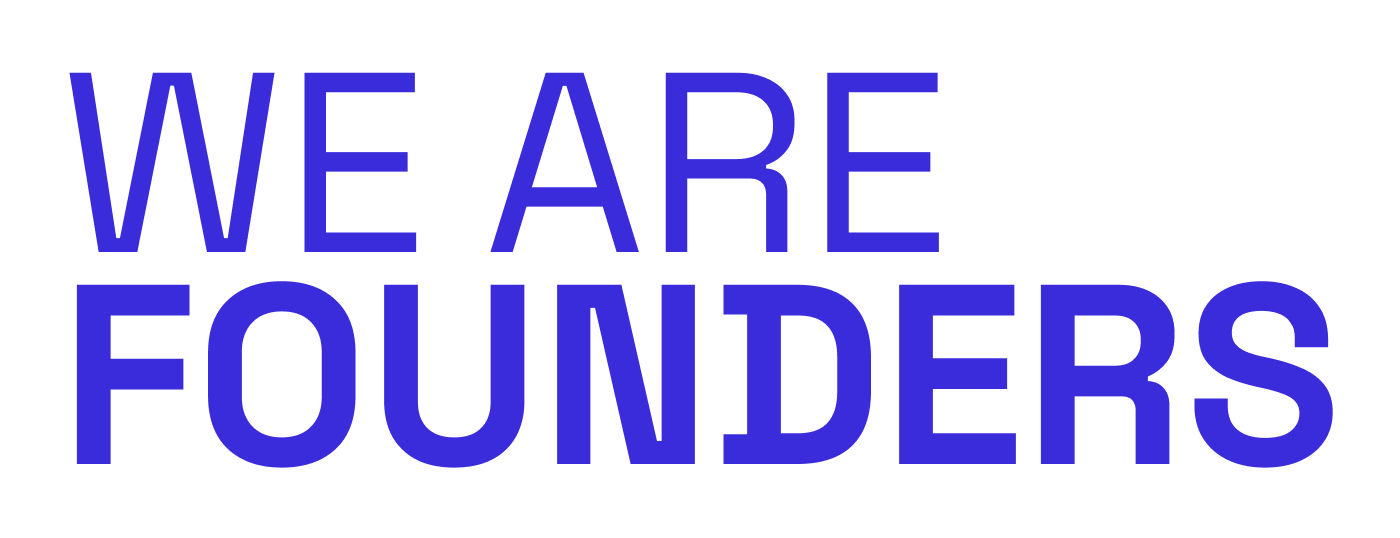Most founders burn cash on ads, cold emails, and sales teams.
Then there are companies like Gamma that barely spend anything on customer acquisition and still hit 70 million users. The difference? They built virality into the product itself.
When your Customer Acquisition Cost (CAC) approaches zero, the entire business model transforms. Every dollar you don't spend acquiring customers drops straight to your bottom line.
This is how you build a lean, profitable company while your competitors are drowning in marketing spend.
What Actually Is CAC (And Why It Usually Sucks)
CAC is simple: how much does it cost to acquire one paying customer?
The traditional formula:
CAC = (Marketing Spend + Sales Spend) / New Customers Acquired
For most SaaS companies, this number is painful. B2B SaaS companies often spend $1.50 to $3.00 for every dollar of Annual Contract Value (ACV) they acquire. Some spend even more.
Here's what that looks like in practice:
| Company Type | Typical CAC | Monthly Spend for 100 Customers |
|---|---|---|
| Traditional SaaS | $500-2,000 | $50,000-200,000 |
| Product-Led Growth | $50-500 | $5,000-50,000 |
| Viral Product | $0-50 | $0-5,000 |
The difference between these models isn't just a few percentage points. It's the difference between needing constant funding rounds and printing money.
The Viral Loop: How Products Sell Themselves
A viral loop is when using your product naturally exposes it to new potential users. You don't need to advertise. The product does it for you.
Gamma nailed this perfectly.
Every time someone creates a presentation and shares it with colleagues or posts it on LinkedIn, that's free advertising. The person viewing it sees "Made with Gamma" and gets curious.
The anatomy of Gamma's viral loop:
- User creates a presentation (gets value immediately)
- User shares presentation with others (necessary part of the workflow)
- Recipients see the presentation (and notice it looks great)
- Recipients click "Made with Gamma" link (curiosity kicks in)
- New users sign up and repeat the cycle
This loop compounds over time. One user becomes two. Two become four. Four become eight. All without spending a dollar on Facebook ads.
The Math That Changes Everything
Let's run the actual numbers to see why this matters so much.
Scenario A: Traditional SaaS Company
- CAC: $500
- Monthly subscription: $30
- Payback period: 17 months
- Break-even: After 17 months per customer
Scenario B: Viral Product (like Gamma)
- CAC: $10 (minimal onboarding costs, server costs)
- Monthly subscription: $30
- Payback period: Less than 1 month
- Break-even: Almost immediately
When your payback period drops from 17 months to less than one month, you can reinvest revenue immediately. You're not trapped waiting 1.5 years to break even on every customer.
This creates a cash flywheel. Make money fast, reinvest it into product improvements, improve the viral loop, acquire more users for even less.
K-Factor: The Number That Predicts Explosive Growth
In viral growth, there's one metric that matters more than anything else: the K-factor.
K-factor formula:
K = (Number of invites per user) × (Conversion rate of invites)
Here's what different K-factors mean:
- K < 1: Your growth is linear. You need to keep adding fuel (marketing spend) to keep growing.
- K = 1: You're replacing churned users with new viral users. Growth is flat.
- K > 1: You're experiencing exponential growth. Each user brings more than one new user.
Gamma likely achieved a K-factor above 1 during their explosive growth phase. If every user brought in 1.2 new users on average, that small difference compounds into millions of users over time.
Let's visualize this:
| Starting Users | K=0.8 (Linear) | K=1.0 (Flat) | K=1.2 (Exponential) |
|---|---|---|---|
| Month 1 | 1,000 | 1,000 | 1,000 |
| Month 2 | 1,800 | 2,000 | 2,200 |
| Month 3 | 2,440 | 3,000 | 3,640 |
| Month 6 | 4,738 | 6,000 | 17,915 |
| Month 12 | 9,020 | 12,000 | 743,008 |
Same starting point. Wildly different outcomes. A K-factor above 1 is the difference between struggle and hockey stick growth.
LTV:CAC Ratio: The North Star Metric
If CAC tells you what you spend to acquire a customer, LTV (Lifetime Value) tells you what that customer is worth over their entire relationship with your product.
LTV formula:
LTV = (Average Revenue Per User) × (Average Customer Lifespan)
The magic happens when you compare LTV to CAC:
LTV:CAC benchmarks:
- < 1:1 - You're losing money on every customer (not sustainable)
- 1:1 to 3:1 - You're breaking even or barely profitable (okay but not great)
- 3:1 to 5:1 - Healthy SaaS business (this is the target zone)
- > 5:1 - Exceptional unit economics (rare and powerful)
When your CAC approaches zero, your LTV:CAC ratio shoots through the roof. If Gamma has an LTV of $200 per user and a CAC of $10, that's a 20:1 ratio. That's absurd in the best way possible.
This ratio explains how Gamma reached profitability so quickly while scaling to 70 million users. Read the full story of how Gamma proved everyone wrong and built a $2B company.
Payback Period: How Fast You Recover Your Investment
Your payback period tells you how long it takes to make back what you spent acquiring a customer.
Payback period formula:
Payback Period = CAC / Monthly Revenue Per Customer
Why this matters: the faster you recover your CAC, the faster you can reinvest that money into growth.
Real-world comparison:
| Company Model | CAC | Monthly Revenue | Payback Period |
|---|---|---|---|
| Enterprise SaaS | $5,000 | $500 | 10 months |
| SMB SaaS | $500 | $50 | 10 months |
| PLG SaaS | $100 | $30 | 3.3 months |
| Viral Product | $10 | $30 | 0.33 months (10 days) |
A 10-day payback period means every dollar you make can be reinvested almost immediately. You're not waiting months to see returns. This velocity is what enables rapid scaling without raising massive funding rounds.
How to Engineer Virality Into Your Product
You can't just wish for viral growth. You have to design it into the core product experience. Here's how to actually do it.
Step 1: Identify Your Natural Share Moment
When does using your product naturally involve other people? For Gamma, it's when you share a presentation. For Loom, it's when you send a video message. For Figma, it's when you collaborate on a design.
Ask yourself: what action in my product creates an artifact that others need to see?
Step 2: Make Sharing Frictionless
If sharing your product's output requires seven clicks and an export process, you've killed your viral loop. Make it one-click simple.
Gamma lets you share with a link. No downloads, no file attachments, no friction. The easier you make it to share, the more people will share.
Step 3: Add Value for Both Sides
The person sharing needs to get value (sharing their work). The person receiving needs to get value (seeing great content). If either side has a bad experience, the loop breaks.
When someone receives a Gamma presentation, it actually looks good and works well. They're not annoyed by the share. They're impressed.
Step 4: Include Clear Attribution
People need to know what tool created the thing they're looking at. Subtle branding works best.
"Made with Gamma" at the bottom of presentations. "Recorded with Loom" on videos. "Designed in Canva" on graphics. It's not obnoxious, but it's visible enough to spark curiosity.
Step 5: Optimize the Landing Experience
Someone clicked your link from a shared artifact. Now what? This moment is critical.
Show them exactly how to create what they just saw. Not a generic homepage. Not a feature list. A clear path to creating their own version immediately.
The Freemium Model That Actually Works
Viral growth only works if people can start using your product immediately. That means freemium, but most companies get freemium wrong.
Bad freemium:
- Free tier is barely usable (feels like a demo)
- Paywall appears too early (frustration)
- Premium tier only removes annoyances (not adding value)
Good freemium (Gamma's approach):
- Free tier delivers real value (you can actually create presentations)
- Upgrade adds capabilities, not just removes limits (more AI credits, advanced features)
- Users hit natural upgrade moments (need more AI generations, want custom branding)
The key insight: your free tier should be good enough that users genuinely love it and tell others about it. If free users don't see value, they won't share. If they don't share, you don't grow.
Network Effects vs. Viral Loops (They're Different)
People often confuse these concepts. They're related but distinct.
Viral loops: Your product spreads to new users because existing users share their output. Each user can bring new users, but those new users don't necessarily interact with existing users.
Network effects: Your product becomes more valuable as more people use it. Facebook is more useful when your friends are on it. Slack is more useful when your team is on it.
Gamma has viral loops (sharing presentations brings new users) but limited network effects (your presentation works fine whether others use Gamma or not).
Some products have both. Figma has viral loops (designers share files) and network effects (collaboration is better when everyone uses Figma). That's the holy grail.
When Viral Growth Isn't Enough
Here's the reality check: viral growth is amazing, but it's not always enough on its own.
Viral growth works best when:
- Your product creates shareable artifacts (presentations, designs, videos)
- Using the product naturally involves showing others your work
- The free tier provides genuine value
- The product is easy to understand at a glance
Viral growth struggles when:
- Your product is B2B enterprise (long sales cycles, procurement processes)
- The value is invisible to outsiders (backend tools, developer platforms)
- You need education or training (complex workflows)
- Security or compliance matters (can't just sign up and start)
If you're building developer tools, viral loops might not be your primary growth engine. You might need content marketing, open source contributions, or community building instead.
Know your product's natural distribution channel. Don't force viral mechanics where they don't fit.
The Dark Side: When Growth Outpaces Infrastructure
Rapid viral growth sounds perfect until your servers crash under load. Or your support team can't keep up. Or your onboarding breaks.
Companies like Gamma had to prepare for explosive growth. That means:
- Scalable infrastructure (can you handle 10x traffic tomorrow?)
- Automated onboarding (humans can't onboard thousands of users per day)
- Self-service support (FAQs, docs, chatbots before human support)
- Monitoring and alerts (catch problems before users do)
Growth without preparation leads to user experience disasters. Bad experiences spread faster than good ones. Protect your viral loop by making sure the product actually works when users arrive.
Your Action Plan: Building Your Own Viral Engine
Let's get tactical. Here's how to start engineering virality into your product, even if you're just starting out.
Week 1: Audit Your Share Moments
- Map out every point where users might show their work to others
- Identify which moments are already happening naturally
- Look for friction points that prevent sharing
Week 2: Build One-Click Sharing
- Create simple share links (no logins required for viewing)
- Add subtle branding to shared artifacts
- Test the recipient experience (is it clear what they're looking at?)
Week 3: Optimize Your Landing Page
- Create a specific landing page for viral traffic
- Show people how to create what they just saw
- Remove barriers to signup (social auth, email-only, no credit card)
Week 4: Measure Your K-Factor
- Track how many people each user invites or shares with
- Measure conversion rate from view to signup
- Calculate your actual K-factor
Week 5+: Iterate and Improve
- A/B test share copy and buttons
- Experiment with referral incentives (careful not to create perverse incentives)
- Double down on what's working
Real Examples Beyond Gamma
Let's look at other companies that mastered near-zero CAC through viral loops.
Loom (async video messaging)
- Viral mechanism: Every video shared is an ad for Loom
- K-factor driver: Recipients see how easy it is to record
- CAC impact: Grew to 14M+ users with minimal paid marketing
Calendly (meeting scheduling)
- Viral mechanism: Every meeting invite includes Calendly branding
- K-factor driver: Recipients want to stop sending email chains for scheduling
- CAC impact: Hit $100M ARR largely through product-led growth
Notion (productivity/docs)
- Viral mechanism: Shared workspaces and public pages
- K-factor driver: Teams adopt it together, templates spread virally
- CAC impact: Reached $10B valuation with tiny marketing budget
Notice the pattern? All of these products create artifacts that get shared with others as part of normal usage.
The Compounding Effect of Low CAC
Here's where the math gets really fun. When you're not burning cash on acquisition, you can invest in product improvements instead.
Better product leads to happier users. Happier users share more. More sharing leads to more users. More users generate more revenue. More revenue funds more improvements.
This is how Gamma reached profitability while scaling to 70 million users with just 50 employees. They weren't stuck in the fundraising cycle. They controlled their own destiny.
Compare this to traditional SaaS companies that raise massive rounds, spend aggressively on sales and marketing, and remain unprofitable for years. They're trapped on the fundraising treadmill.
Why Most Founders Get This Wrong
Building viral loops is hard. Most founders fail at it because they make one of these mistakes:
Mistake 1: Adding sharing as an afterthought You can't just slap a "Share" button on your product and call it viral. Sharing has to be integral to how the product works.
Mistake 2: Requiring signups to view shared content If I need to create an account just to see someone's presentation, I'm bouncing. Make viewing frictionless.
Mistake 3: Over-optimizing for virality at the expense of value Annoying popups, aggressive branding, and forced shares kill user experience. Your product still needs to be great.
Mistake 4: Ignoring retention Viral growth without retention is a leaky bucket. You acquire users fast but lose them just as fast. Fix retention first.
Mistake 5: Giving up too early Viral loops take time to compound. You might not see explosive growth in month one. Give it time to work.
The Bottom Line: $0 CAC Is Your Competitive Moat
When your competitors are spending hundreds of dollars to acquire each customer and you're spending near zero, you've built an unbeatable advantage.
You can undercut them on price. You can invest more in product. You can weather market downturns. You can grow profitably while they're burning through runway.
This isn't just about saving money on marketing. It's about building a fundamentally different type of business. One that scales efficiently, compounds value, and doesn't need constant external funding to survive.
Your Next Steps
Start with these three questions:
- What artifact does my product create that users naturally share with others?
- How can I make sharing that artifact as frictionless as possible?
- When someone receives that shared artifact, is it immediately clear how to create their own?
If you can't answer these questions clearly, you probably don't have a viral loop yet. That's okay. Not every product needs to be viral. But if you're targeting millions of users as a small team, engineering virality into your core product isn't optional.
The best time to build this was before launch. The second best time is right now.
Want to see the complete breakdown of how Gamma built a $2B company with these principles? Read the full story here.




